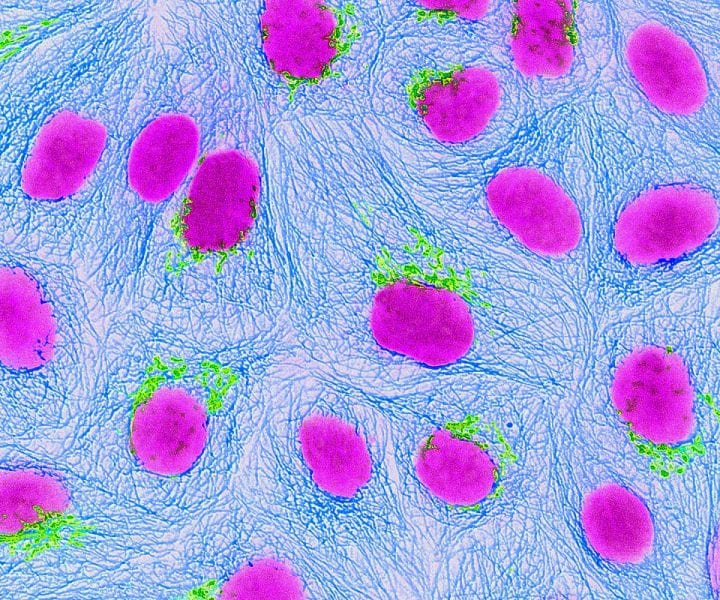Magnetogenetics is a promising approach manipulating cellular functions in tissues and organisms with high spatial and temporal resolution. As magnetic fields can pass freely through organic tissue, no surgery or tethering animals to an energy source is required. Thus, the concept of magnetogenetic manipulation will open exciting perspectives as a tool for multidisciplinary applications in chemistry, bioengineering, bionanosciences, biology, biophysics, or neurosciences, cell biology and/or medical applications.
However, a challenging issue for magnetogenetics is to conjugate target proteins with magnetic probes that can satisfy multiple colloidal and biofunctional constraints. The work by Liße et al., conducted in the laboratories of Professor Jacob Piehler at the University of Osnabrück and of Professor Maxime Dahan at the Institut Curie, reports successfully engineered semisynthetic magnetic nanoparticles with tailored properties for remote-controlled intracellular manipulation of molecules and organelles. Remote control of cellular functions is a key challenge in biomedical research. The versatile applicability of magnetic intracellular stealth ferritin (MagIcS HCF) was achieved by carefully combining a small hydrodynamic size with high magnetic response, biocompatible stealth coating, and highly specific and ultrafast targeting moieties.
This interdisciplinary study at the interface between materials science, biochemistry, cell biology, and biophysics established subcellular control of proteins and organelles with unprecedented spatial and temporal resolution. Magnetic control of cellular behavior will become an active field of research in near future and magnetogenetics will become a key technology, complementary to optogenetic tools.

















